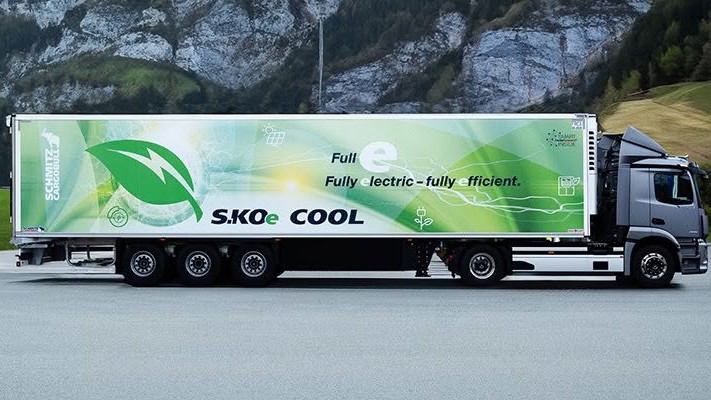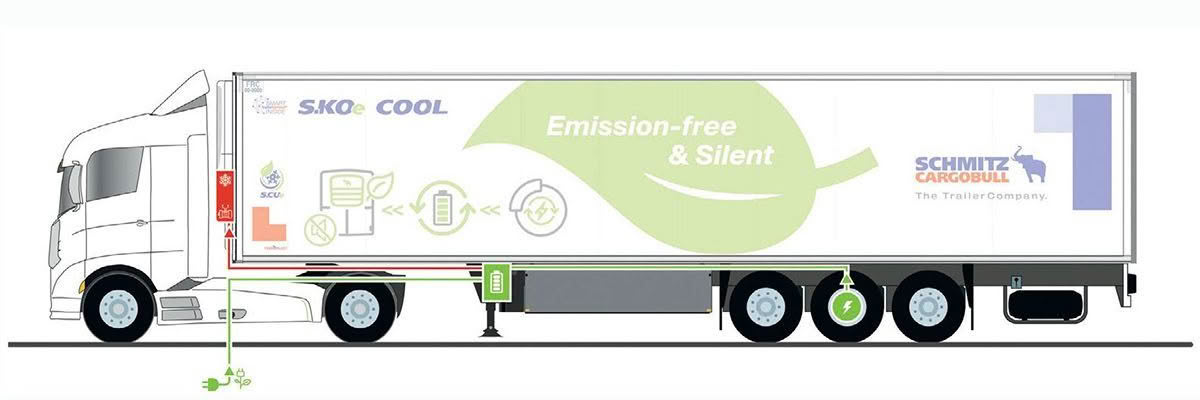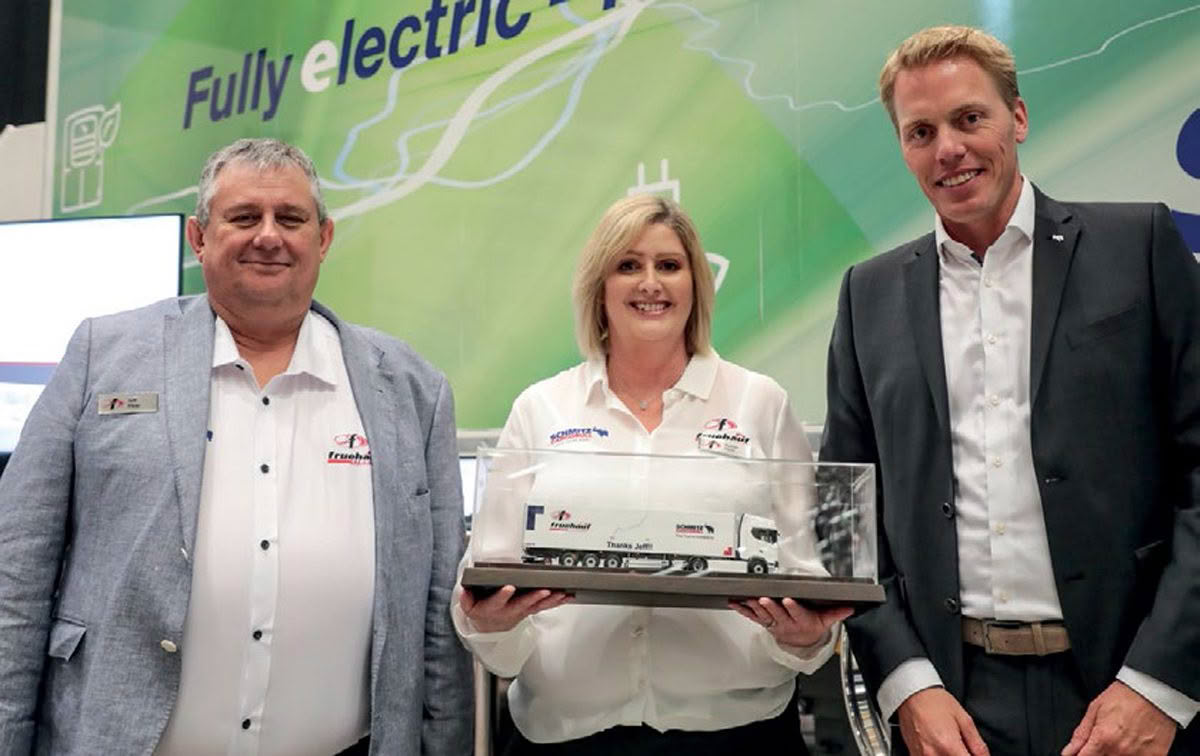
Fruehauf NZ recently showcased a range of new products at its Sustainability, Innovation, Digitalisation Expo. The main event, however, was the launch of the Schmitz Cargobull S.KOe Cool fully electric semi-trailer.
This year, Fruehauf NZ and Schmitz Cargobull celebrate an eight-year partnership. It began in 2016 with the introduction of Schmitz Cargobull Ferroplast bodies; the next step was to bring in the brand’s refrigeration units. Over the years, Fruehauf NZ has also built up an associated aftersales network, prioritised upskilling and training and invested in parts keeping.
“With Fruehauf NZ, we have become the best and most advanced trailer and refrigeration unit manufacturer for the New Zealand market,” says Schmitz Cargobull CEO Andreas Schmitz.
As the two companies enter the next phase in their relationship, Fruehauf NZ has introduced the Schmitz Cargobull S.KOe Cool fully electric semi-trailer. The first of the model in the Southern Hemisphere, it is billed as the most thermally efficient trailer in New Zealand, replacing traditional diesel-powered fridge units with an all-electric setup.
Power is generated by a 20kW electric generative axle with recuperation placed in the middle of the tri setup. This keeps the 32kWh lithium iron phosphate battery at charge while driving, increasing the range and preventing unscheduled stops. The battery pack itself is incorporated into the trailer’s landing gear. It has a self-sufficient running time of approximately 4.5 hours and requires about two hours for a full charge.

An electric generative axle combines with a 32kWh battery pack and electric refrigeration unit to deliver better efficiency than a conventional fridge unit.
The vehicle uses existing components from the Schmitz Cargobull modular product system, and charging requires only a classic CEE three-phase connection.
The electric refrigeration unit provides 15,800W cooling capacity and 10,500W heating capacity. The refrigeration circuit is identical to conventional refrigeration units. The charging and battery management system ensures full practicality, so goods remain at temperature for the duration of the journey.
The system offers three modes for full refrigeration control: The Standard mode allows the battery charge to drop down to 50% before the system begins energy recuperation. It’s billed as cost- efficient protection against spoilage. For maximum savings, operators can select Eco mode, in predominantly battery-only driving, allowing the battery to run down to 10% charge. Conversely, Safe mode allows maximum protection against spoilage, allowing the battery to run down to only 80%. In this mode, the system starts recuperating very quickly and constantly, for example, when stuck for hours in rush-hour traffic.

The S.KOe Cool is about 100kg heavier than a conventional fridge unit. However, it returns 5% better efficiency. It can accommodate 33 Euro pallets/26 ISO pallets.
Naturally, with no diesel engine powering it, the fridge unit operates virtually silently. Maintenance is also significantly reduced. Finally, all vehicles are equipped with the TrailerConnect telematics portal as standard, which allows refrigeration unit control with setpoints for operation, temperature and alarm management. It provides information about the battery’s state of charge and the vehicle’s position and is used for route planning.
“TrailerConnect telematics gives drivers and dispatchers visibility and confidence in the fleet 24/7,” says Josh Mear, Cargobull support at Fruehauf NZ.
“The driver can download the app on their phone or tablet and connect to the system via built-in wi-fi. The despatch team can also set optimum operating conditions, and customers can download live reports and temperature readings.”
In addition to the S.KOe trailer, Fruehauf NZ also showcased units fitted with the Joloda floor system, a flatdeck with the Libner Openbox body, and Scania’s 25P EV with Ferroplast body.
An evolving business
Michael Temminghoff, Schmitz Cargobull MD of international sales, says the company makes $100 million per year in research and development and technological investments. “We innovate and strive to provide reliability in the products we offer. To grow globally, we rely on partnerships and the local know-how of our partners. We aren’t experts in the New Zealand market; we’re experts in refrigeration technology. We build a great body that has changed the standards in the New Zealand market.”
With some European cities introducing zero emission zones from 2025 – which will only allow zero-emission vehicles to access them – Schmitz Cargobull originally debuted the S.KOe Cool two years ago. Fruehauf NZ managing director Jeff Mear explains the decision to waste no time bringing it to New Zealand.
“Four years ago, we were shut down in the first Covid lockdown. It gave us the time to reflect on our business. We needed to develop a more sustainable and stable structure focusing on environmental, social and governance practices.
“We also embarked on a programme called ‘resilience’; we needed to build a stronger and better business around those principles. This initiative involved enhancing governance in our business, building robust internal systems, boosting internal productivity and investing in the technology coming through today.”

As part of its ‘resilience’ programme, Fruehauf NZ has also aimed to increase transparency for its clients, suppliers and staff. It will soon introduce its own portal, called Fruehauf Intranet, allowing clients to keep tabs on their equipment and track the progress of their builds, scheduling and the build process.
“Today, we recognise the importance of decarbonising our business and our customers’ businesses. These products are cutting-edge innovations,” Jeff continues.
“We can grizzle about it, but it’s dawned on me that it’s us who must change; future generations will demand it. This technology showcases our important steps to reaching that goal. They’re not game-changers, but they’re a step on that ladder.”
The S.KOe trailer is available for customer trials. “We want to give this trailer to our customers to use and understand the tech. It’s new tech; we want to learn from it, too. We want to be at the forefront of understanding how it works,” he says.











